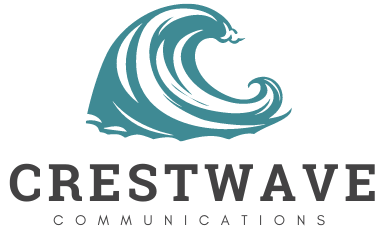Gone are the days when public relations was solely a blend of intuition and creativity. In today’s data-driven world, the PR campaigns that thrive are the ones that incorporate data analytics to sharpen their reach and impact. For brands aiming to stay relevant and resonant, harnessing data is essential. It’s the key to unlocking insights that allow brands to understand their audiences better, fine-tune their messaging, and measure campaign success with precision.
Let’s explore how data-driven public relations is revolutionizing PR, the metrics that matter, and actionable strategies to help you start integrating data into your PR strategies and make real-time adjustments.
The Shift to Data-Driven public relations: From Intuition to Informed Strategy
Traditionally, PR was rooted in relationships, storytelling, and cultivating a brand image through creative campaigns and media outreach. While these elements remain vital, the industry moved beyond intuition-based decisions to measurable strategies that drive tangible results. Far from sidelining creativity, data complements it, empowering brands to better understand audience behaviors, preferences, and emotional responses.
By integrating data analytics, brands can map trends, detect emerging audience preferences, predict potential crises, and sharpen their competitive edge. In doing so, they transition from broadcasting messages to building meaningful connections with audiences, creating campaigns that resonate on a deeper level.
Key Metrics That Drive Campaign Success
An effective PR strategy hinges on tracking the right metrics. While countless data points can be measured, focusing on the most impactful metrics helps brands understand reach and resonance. Here’s a look at the key metrics that Crestwave Communications prioritizes:
- Media Impressions: Media impressions measure the potential audience reached across various platforms. It’s a vital metric for assessing visibility and the scope of message dissemination.
- Engagement Rates: Engagement reflects how audiences interact with content, such as shares, comments, likes, and clicks. High engagement shows that content resonates, while lower engagement suggests a need for adjustments.
- Share of Voice: This metric tracks how a brand’s visibility compares to competitors in the media landscape. It provides a clear benchmark for visibility and relevance in the industry.
- Sentiment Analysis: Sentiment analysis gauges public opinion about a brand, providing a way to assess how a brand is perceived. This is especially important during key moments, like product launches or crises, to understand the mood of the audience.
These metrics provide a multi-dimensional view of how a brand performs in the public eye, going beyond simple visibility to include emotional engagement and competitive positioning.
How Data Elevates Brand Storytelling
Data-driven storytelling allows brands to craft narratives that resonate deeply with their audiences. For example, by analyzing audience behaviors, you can identify themes or topics that are gaining traction and weave these insights into client messaging. If data shows that topics related to sustainability, for example, are gaining interest, you may want to highlight environmental initiatives. This not only aligns with audience interests but also builds stronger emotional connections.
When stories are backed by data, they’re more relevant, relatable, and impactful. Instead of merely broadcasting messages, brands become responsive to what audiences care about, which strengthens trust and loyalty.
Real-Time Campaign Adjustments: Staying Agile and Effective
Data isn’t just for post-campaign analysis; it’s an invaluable resource for real-time adjustments. By regularly reviewing analytics, brands can pivot and fine-tune their messages as needed, ensuring that they’re always aligned with audience preferences. Crestwave emphasizes agility in its data-driven approach, encouraging brands to make data-informed changes that boost engagement and reach. If a campaign starts underperforming, real-time data allows brands to adjust immediately, rather than waiting for a full post-campaign assessment.
This adaptability transforms PR into a dynamic, iterative process. As campaigns run, brands can experiment with different messages, platforms, and timing, relying on data to guide these shifts.
Actionable Tips for Integrating Data into Your PR Strategy
If you’re ready to incorporate data into your PR strategies, here are some tips to get started:
1. Identify Your Data Sources: Choose analytics tools that align with your goals. Consider platforms like Google Analytics, social media insights, and specialized PR software like Meltwater or Cision for comprehensive data.
2. Set Clear Objectives: Before diving into data, clarify what success looks like. Establish goals, such as improving engagement by 20% or increasing share of voice in specific publications. These goals will help you track the metrics that matter most.
3. Align Metrics with Your Business Goals: Ensure that the metrics you monitor reflect your larger business objectives. If your goal is to strengthen brand reputation, focus on sentiment analysis and share of voice. For brand visibility, prioritize media impressions.
4. Conduct Regular Data Reviews: Data collection is an ongoing process. Regular check-ins allow you to track performance, track trends, and identify emerging opportunities. This will keep your PR strategies relevant and responsive.
5. Use A/B Testing to Refine Messages: Unsure which message will resonate best? Use A/B testing to experiment with different content formats, images, or headlines, and use data to determine which approach performs better.
6. Stay Agile and Adaptable: PR is increasingly fast-paced, and data enables you to keep up. Make it a habit to review analytics weekly or even daily, especially during critical campaigns, to spot trends and pivot if necessary.
7. Embrace Predictive Analytics for Crisis Preparedness: Crisis situations are inevitable, but predictive analytics can help brands be prepared. Analyzing trends can offer early warnings, allowing you to craft proactive responses and mitigate risks before they escalate.
Balancing Data and Creativity: A Winning Combination in Public Relations
Data offers a powerful advantage in modern PR, providing the insights needed to tailor campaigns for maximum impact. But successful PR is ultimately a blend of data and creativity. While analytics can guide smarter strategies, the art of storytelling remains central to connecting with audiences on a human level.
At Crestwave Communications, we believe in using data to fuel stories that resonate. With data-driven public relations, brands can create messages that not only capture attention but also build lasting trust and credibility.



